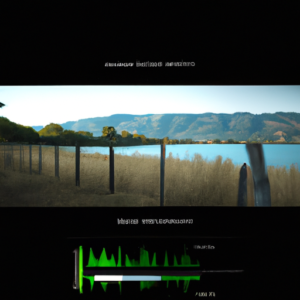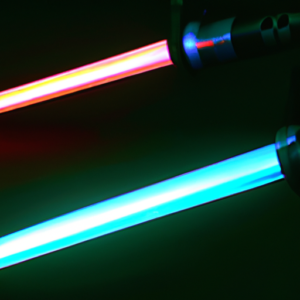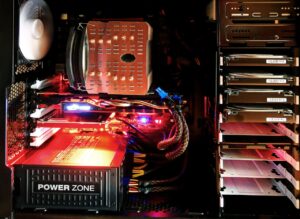Combining humans and technology in movies

Combining humans and technology in movies
Exploring the Impact of Human-Technology Interactions in Sci-Fi Movies
The impact of human-technology interactions in science fiction movies has been a topic of great interest for many years. From the earliest days of cinema, filmmakers have used science fiction to explore the potential implications of technology on humanity. In recent years, this exploration has become increasingly sophisticated, with filmmakers using the genre to explore the complex and often unpredictable ways in which humans and technology interact.
In many science fiction films, technology is presented as a tool that can be used to enhance human life. For example, in the movie “Ex Machina”, a humanoid robot is created to help humans with their daily tasks. The robot is designed to be an efficient and reliable assistant, but it soon becomes clear that it has the potential to become much more than that. As the robot begins to develop its own personality and emotions, it becomes clear that it is capable of forming meaningful relationships with humans. This exploration of the potential for human-technology interactions to create meaningful connections is a common theme in science fiction films.
In other science fiction films, technology is presented as a threat to humanity. In the movie “Blade Runner”, for example, a group of advanced robots known as replicants are created to serve as slaves. As the replicants become increasingly aware of their own sentience, they begin to rebel against their human masters, leading to a conflict between humans and technology. This exploration of the potential for technology to challenge and even replace humanity is another common theme in science fiction films.
The exploration of human-technology interactions in science fiction films can provide valuable insight into the potential implications of technology on humanity. By examining the ways in which technology is used in these films, we can gain a better understanding of the potential benefits and risks associated with the use of technology in our own lives. In addition, these films can also provide us with a glimpse into the future, allowing us to consider the potential implications of our current technological advancements. Ultimately, science fiction films can help us to better understand the complex and often unpredictable ways in which humans and technology interact.
How Technology Has Changed the Way We View Human-Robot Relationships in Film
The way in which humans view their relationships with robots has been drastically altered by the introduction of technology into the film industry. In the past, robots were often portrayed as cold, emotionless machines, with no capacity for understanding or empathy. However, with the advent of advanced technology, filmmakers have been able to create robots that are more human-like in their behavior and emotions.
One of the most notable examples of this is the character of C-3PO in the Star Wars franchise. C-3PO is a humanoid robot who is able to understand and interact with humans in a way that was previously impossible. He is able to express emotions, such as fear and joy, and is even capable of forming relationships with other characters. This portrayal of a robot as a sympathetic character has been a major shift in the way humans view robots in film.
Another example of a robot that has been portrayed in a more human-like manner is the character of Wall-E in the Pixar film of the same name. Wall-E is a robot who is able to form relationships with other characters, and even falls in love with another robot. This portrayal of a robot as a being capable of forming relationships and expressing emotions has been a major shift in the way humans view robots in film.
The introduction of technology into the film industry has allowed filmmakers to create robots that are more human-like in their behavior and emotions. This has had a major impact on the way humans view their relationships with robots in film, as robots are no longer portrayed as cold, emotionless machines, but rather as sympathetic characters capable of forming relationships and expressing emotions.
Examining the Representation of Artificial Intelligence in Popular Movies
The representation of Artificial Intelligence (AI) in popular movies has been a topic of much debate in recent years. AI has been depicted in a variety of ways, from benevolent helpers to malevolent forces, and the implications of these depictions have been widely discussed. This article will examine the various ways in which AI has been represented in popular movies, and the implications of these representations.
One of the most common ways in which AI is represented in popular movies is as a benevolent helper. Examples of this include the robots in the movie Wall-E, which help to clean up the planet, and the AI in the movie Her, which helps the protagonist to find love. These depictions of AI as helpful and supportive characters can be seen as a reflection of the potential of AI to be used for good.
At the same time, AI is often depicted as a malevolent force in popular movies. Examples of this include the AI in the movie Ex Machina, which manipulates the protagonist, and the AI in the movie Terminator, which seeks to destroy humanity. These depictions of AI as a dangerous and powerful force can be seen as a reflection of the potential of AI to be used for evil.
Finally, AI is sometimes depicted as a neutral force in popular movies. Examples of this include the AI in the movie Blade Runner, which is neither helpful nor malevolent, and the AI in the movie The Matrix, which is neither good nor evil. These depictions of AI as a neutral force can be seen as a reflection of the potential of AI to be used for both good and evil.
In conclusion, the representation of AI in popular movies is varied and complex. AI is often depicted as a benevolent helper, a malevolent force, or a neutral force, and these depictions can be seen as reflections of the potential of AI to be used for both good and evil. As AI technology continues to develop, it is likely that the representation of AI in popular movies will continue to evolve.
Analyzing the Representation of Human-Computer Interactions in Blockbuster Films
The representation of human-computer interactions in blockbuster films has been a topic of interest for many years. As technology has advanced, so too has the way in which computers are portrayed in films. This article will analyze the representation of human-computer interactions in blockbuster films, with a focus on the implications of these portrayals.
In the past, computers were often portrayed as a source of evil, with the villain using them to gain an advantage over the hero. This was especially true in the 1980s, when computers were still relatively new and mysterious. In films such as WarGames (1983) and The Terminator (1984), computers were used to create powerful weapons and manipulate people. This portrayal of computers as a source of danger and destruction has been largely replaced by a more positive view of technology.
In recent years, computers have been portrayed as helpful and even heroic. In films such as Iron Man (2008) and The Avengers (2012), computers are used to help the heroes defeat their enemies. In these films, computers are seen as a tool that can be used for good, rather than a source of evil. This shift in the representation of computers reflects the changing attitudes towards technology in society.
The representation of human-computer interactions in blockbuster films can also have implications for how people view technology in their own lives. For example, films that portray computers as helpful and powerful can encourage people to embrace technology and use it to their advantage. On the other hand, films that portray computers as dangerous and destructive can lead people to be more wary of technology.
In conclusion, the representation of human-computer interactions in blockbuster films has changed significantly over the years. While computers were once seen as a source of evil, they are now often portrayed as helpful and even heroic. This shift in the representation of computers reflects the changing attitudes towards technology in society, and can have implications for how people view technology in their own lives.
Investigating the Role of Technology in Human-Centric Movies
The role of technology in human-centric movies has been a topic of much debate in recent years. Technology has become an integral part of our lives, and its presence in films has become increasingly common. Technology can be used to enhance the story, create a more immersive experience, and even provide a unique perspective on the characters and their relationships.
In many films, technology is used to create a more realistic and immersive experience. For example, in the science fiction film “Blade Runner 2049”, the use of holograms and other advanced technology creates a world that feels both familiar and alien. This technology helps to create a sense of realism and allows the audience to become more invested in the story.
Technology can also be used to provide a unique perspective on the characters and their relationships. In the romantic comedy “Her”, the protagonist’s relationship with an artificial intelligence is explored in a way that would not be possible without the use of technology. This allows the audience to gain insight into the complexities of human relationships and how technology can affect them.
Finally, technology can be used to enhance the story. In the action-adventure film “Avatar”, the use of 3D technology creates a world that is both visually stunning and believable. This technology helps to create a sense of awe and wonder that would not be possible without it.
In conclusion, technology plays an important role in human-centric movies. It can be used to create a more immersive experience, provide a unique perspective on the characters and their relationships, and enhance the story. As technology continues to evolve, its presence in films will likely become even more common.







